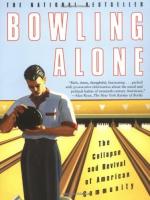
|
| Name: _________________________ | Period: ___________________ |
This test consists of 5 multiple choice questions, 5 short answer questions, and 10 short essay questions.
Multiple Choice Questions
1. Which state had the least number of murders?
(a) North Carolina.
(b) Washington.
(c) Maryland.
(d) North Dakota.
2. In 1999 how many sixth-graders had a TV set in their bedroom?
(a) 51 percent.
(b) 48 percent.
(c) 77 percent.
(d) 64 percent.
3. How many civic associations were members of the generation born in the 1920s liable to belong to compared to the generation born in the late 1960s?
(a) 50 percent more.
(b) Three time as many.
(c) 30 percent more.
(d) Twice as many.
4. How long did it take the telephone to reach 75 percent of American households?
(a) 74 years.
(b) 53 years.
(c) 67 years.
(d) 41 years.
5. Of the Korean business owners who used debt to start a business, how many borrowed money from family?
(a) 32 percent.
(b) 27 percent.
(c) 41 percent.
(d) 59 percent.
Short Answer Questions
1. In 1959, how many American homes had television?
2. In Figure 82 "Index of Educational Performance," what state was at the bottom of the chart?
3. How long had studies been conducted that showed that small schools tended to outperform large schools?
4. By 1995, what percent of Americans opposed interracial dating?
5. Who sang, "get by with a little help from our friends"?
Short Essay Questions
1. What did the most systematic study of civic skills in contemporary America suggest?
2. Why did smaller schools encourage more active involvement in extracurricular activity?
3. What was different about American males in their sixties and seventies at the end of the twentieth century than their grandsons?
4. What did teachers report in areas where civic engagement in community affairs in general was high?
5. Which Americans were more likely to be involved in religious activities?
6. Why did Putnam believe that there was an increase in nostalgia in the late twentieth century?
7. What is one of the strongest predictors of whether inner-city black youths find jobs and why?
8. Materially, how did the standard of living improve in the United States during the 50 years after the Civil War?
9. What did Putnam see as a trend in newspaper readership?
10. How did the school integration busing issue illustrate the trade-offs between bridging and bonding social capital?
|
This section contains 699 words (approx. 3 pages at 300 words per page) |

|




